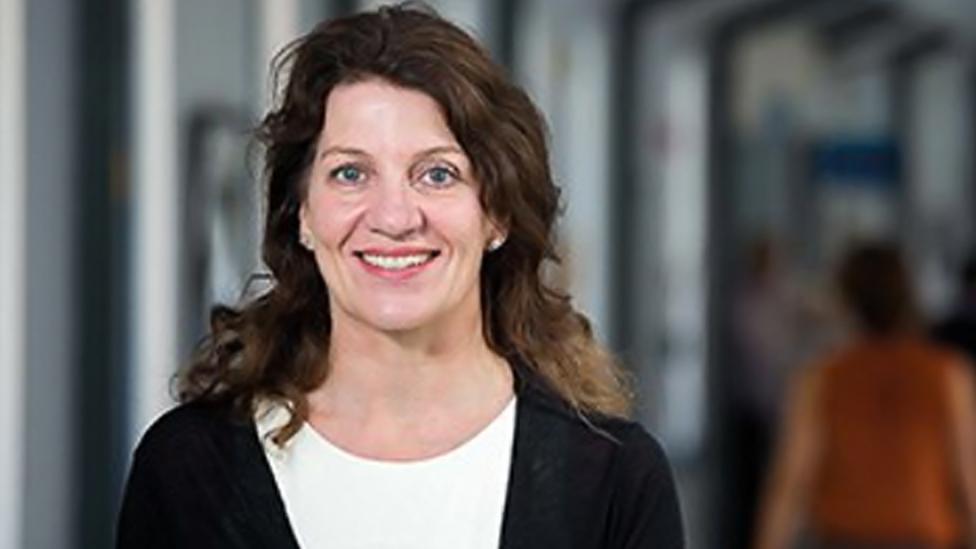London Ambulance Service: Paramedics needed to meet record levels of demand
- Published

Last year was the busiest on record for the London Ambulance Service (LAS)
The London Ambulance Service (LAS) has said it is facing record numbers of daily call outs, equivalent to "New Year's Eve" levels.
A recruitment drive has been launched to manage the surge in demand - some of which was caused by the pandemic, Daniel Elkeles, LAS chief executive said.
Last year was the busiest on record, with 2.1million emergency calls.
About 1,000 frontline staff and 500 paramedics are wanted by March 2023.
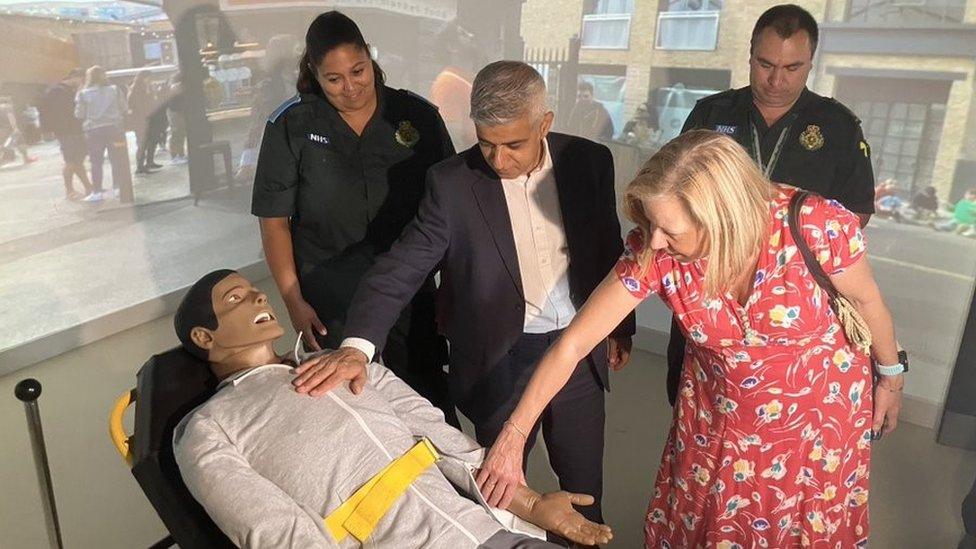
The Brentside Education Centre features a state of the art ambulance simulation suite
Mr Elkeles added there were lots of reasons for the rise in demand one of which was "bound to be Covid", but said the service was responding with the recruitment drive.
"What we are here for is to provide a service now, and we are increasing the number of people we employ who are paramedics in order for us to respond to that level of demand."
London Mayor Sadiq Khan said the service had never experienced as many emergency calls before.
Speaking at the opening of a new £7m training facility in Hounslow, west London on Monday, he said: "Before the pandemic, the busiest day of the year we'd get about 5,000 calls, which would be New Year's Eve.
"On a daily basis now, the ambulance service receives more than 6,500 calls."
He added Londoners should only call 999 if all other options had been considered.

London Mayor Sadiq Khan likened current levels of call outs to New Year's Eve
The Brentside Education Centre features an ambulance simulation suite, the only one of its kind in use by an ambulance trust.
LAS said it expected the site and a twin facility in Newham to train 1,000 new recruits to fill operational roles as part of its "most ambitious" recruitment drive.
The Covid-19 pandemic put significant strain on the LAS' resources, with around 500 firefighters stepping in as volunteer ambulance drivers.
The service took on average 500 more calls per day than pre-pandemic levels and received 2.1m calls in 2021, compared to 1.9m in 2020.
Wait times for Category 1 patients - the most severe call outs - were kept at the national maximum target of seven minutes.
But wait times for Category 2 patients - which included those suffering from a stroke - rose to 42 minutes.

Follow BBC London on Facebook, external, Twitter , externaland Instagram, external. Send your story ideas to hellobbclondon@bbc.co.uk, external
Related topics
- Published18 April 2022
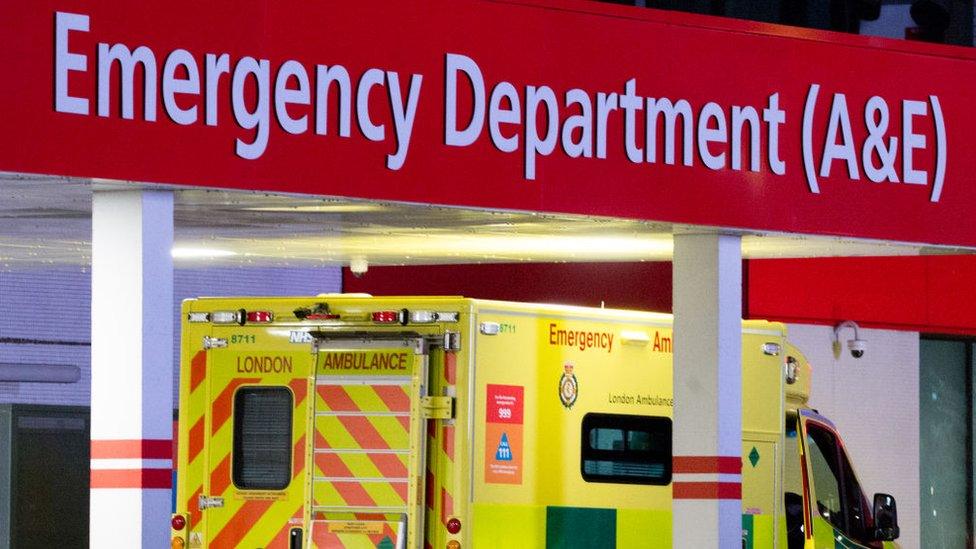
- Published16 February 2016
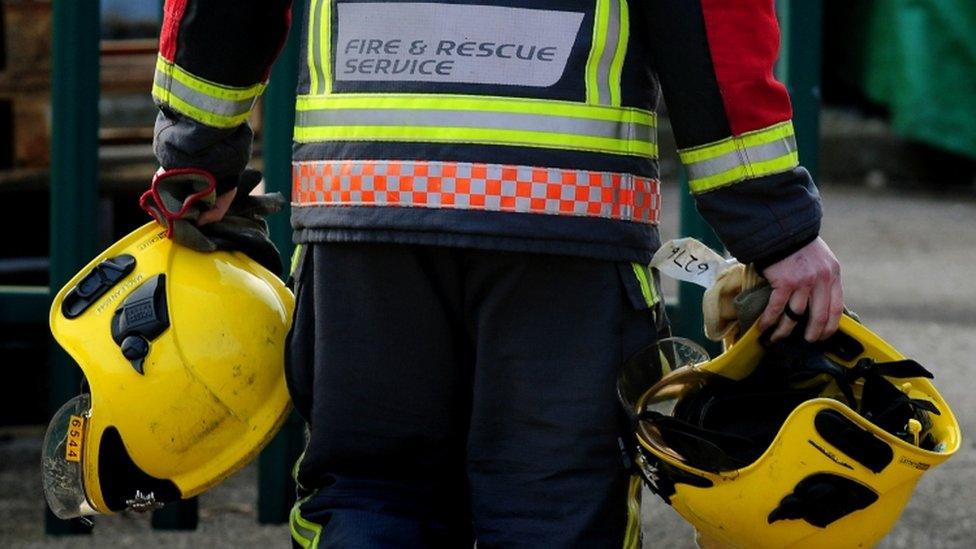
- Published18 January 2021
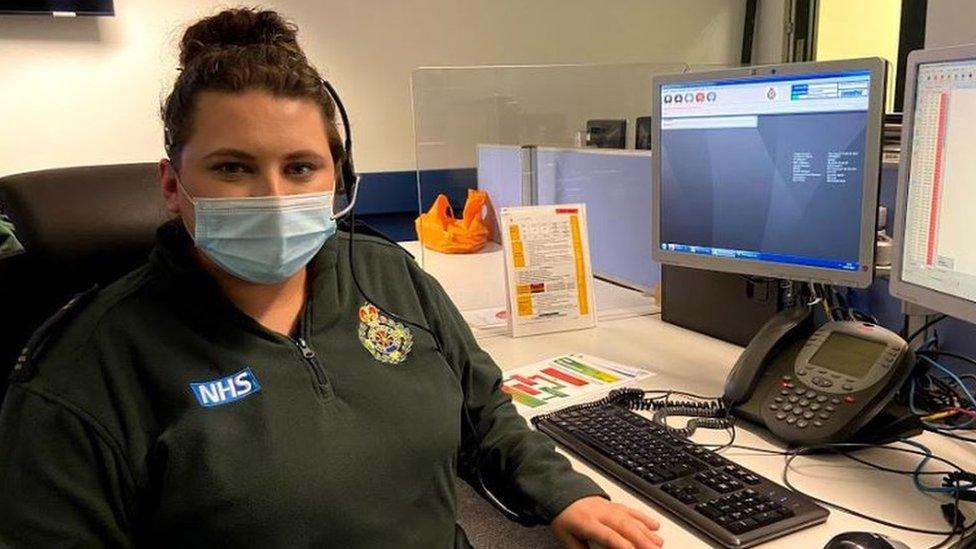
- Published12 May 2022

- Published28 April 2022
